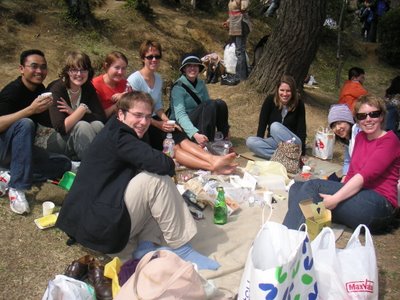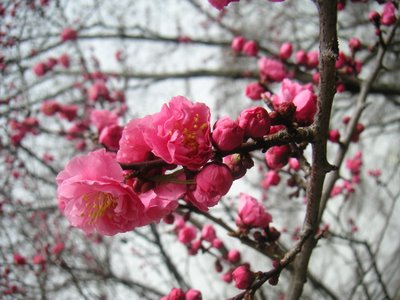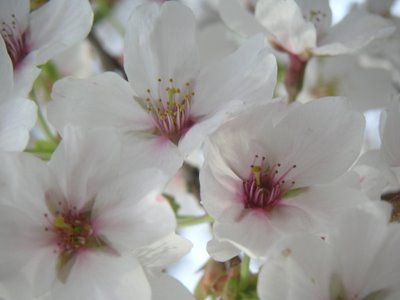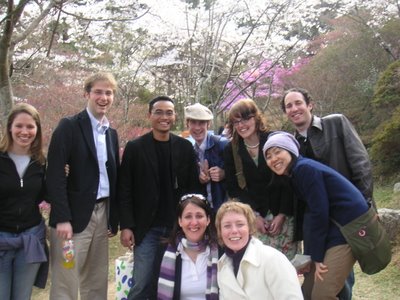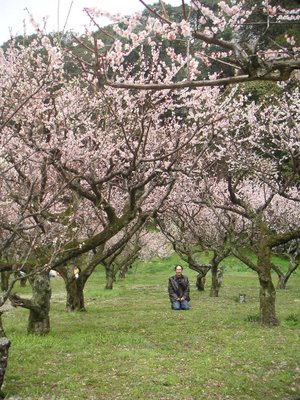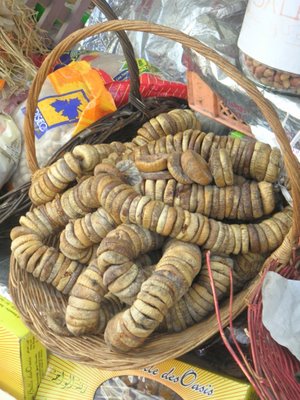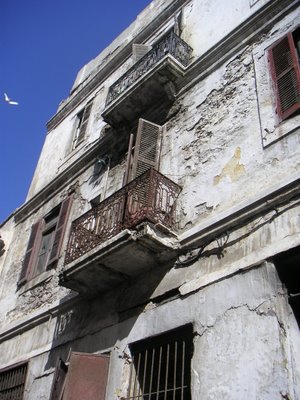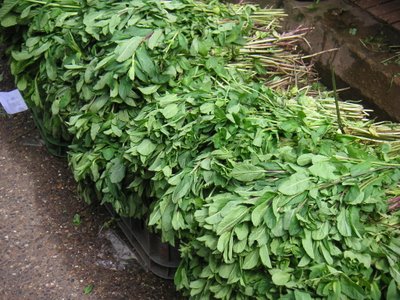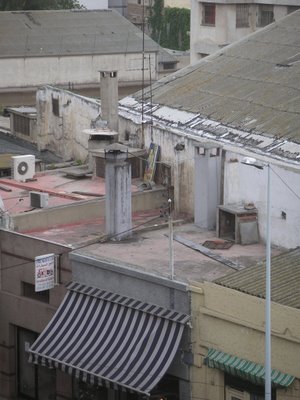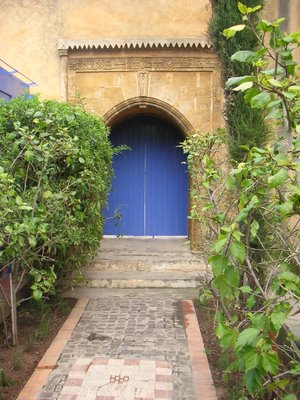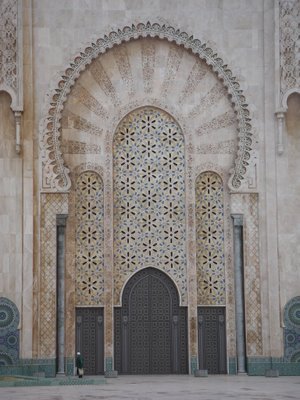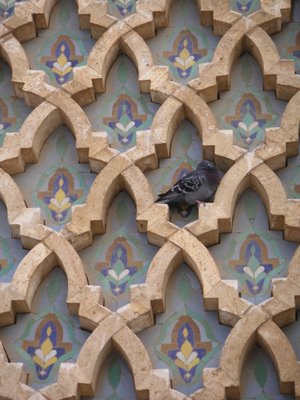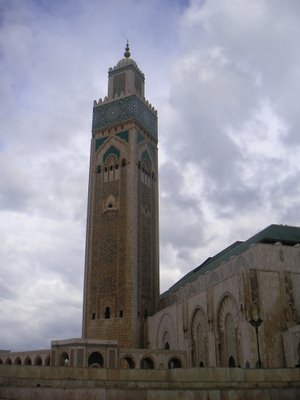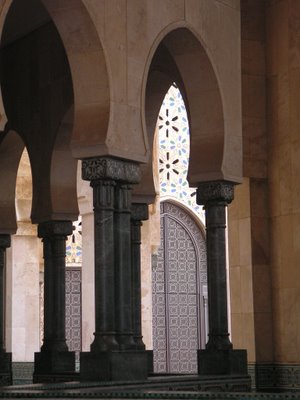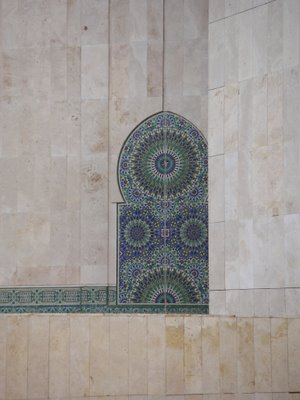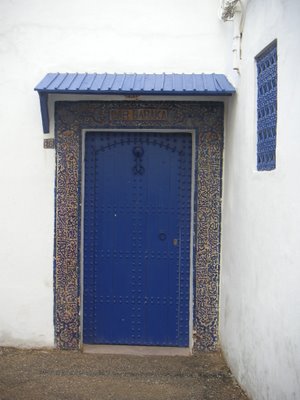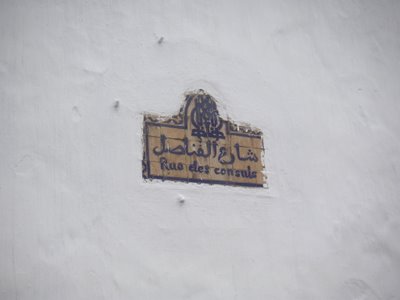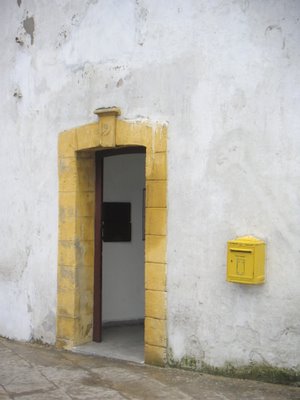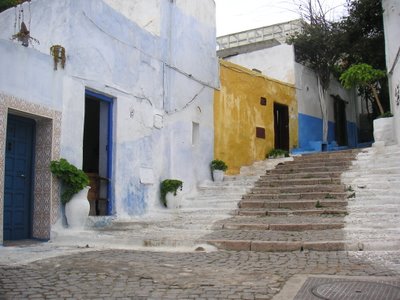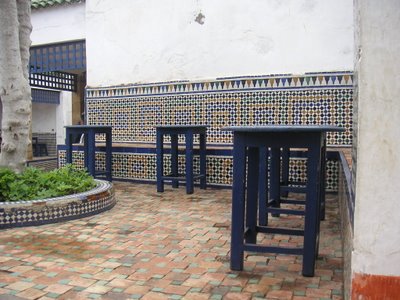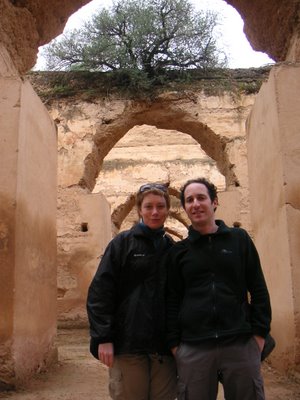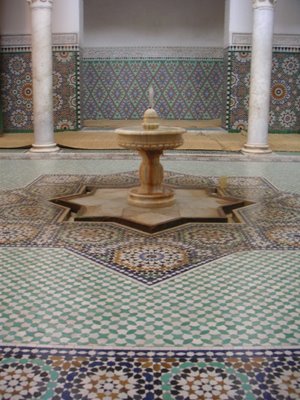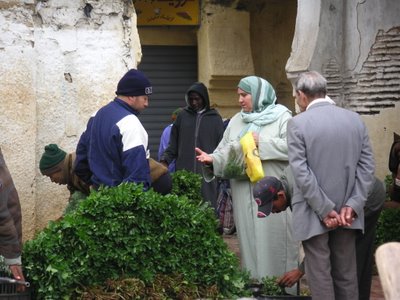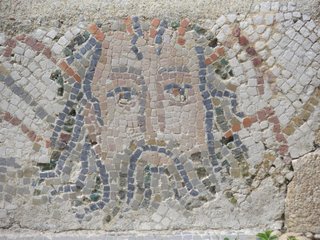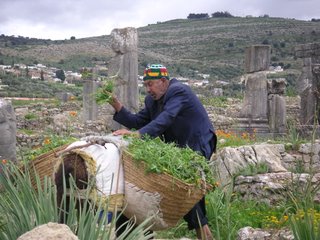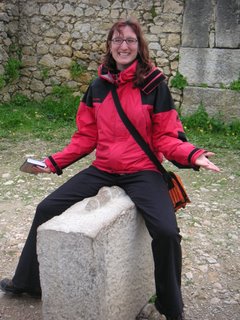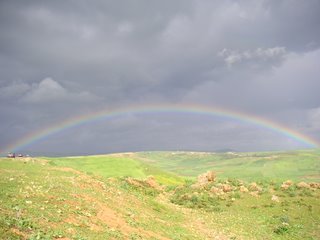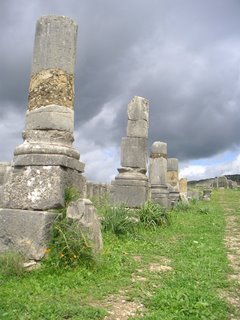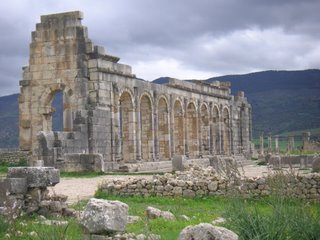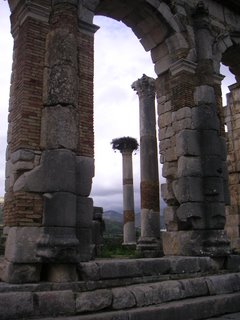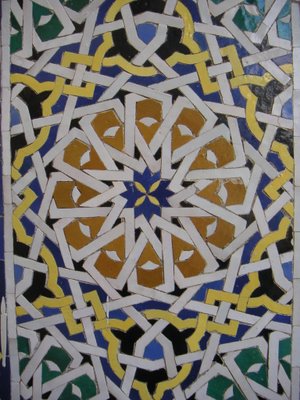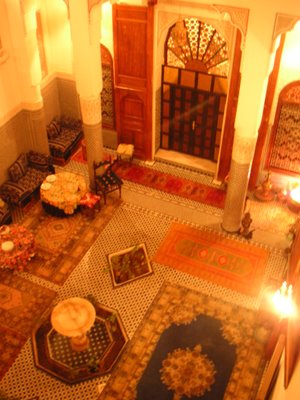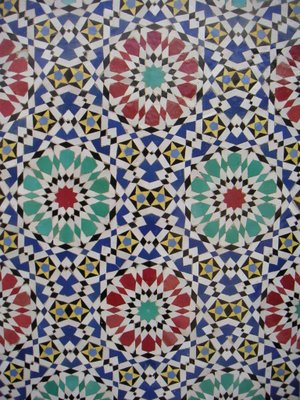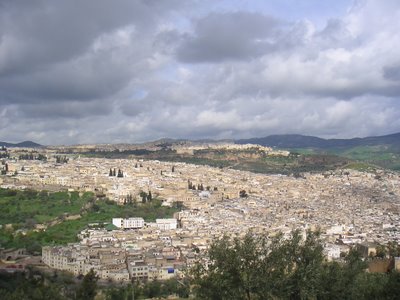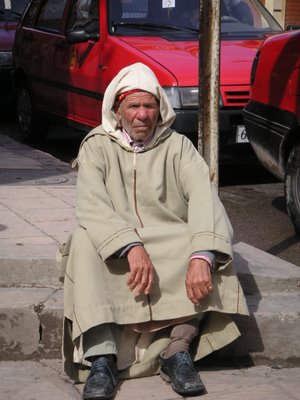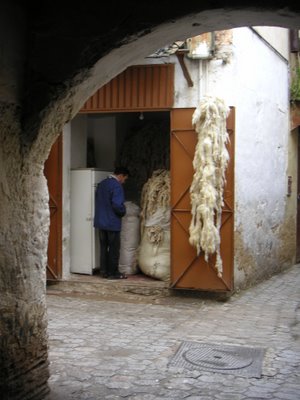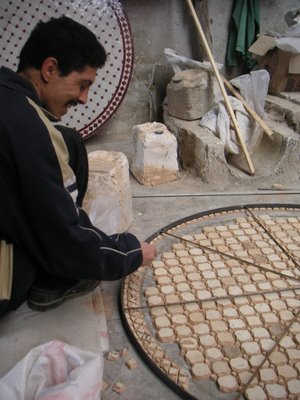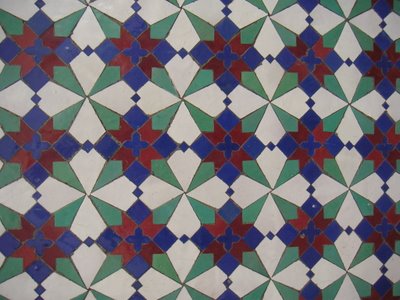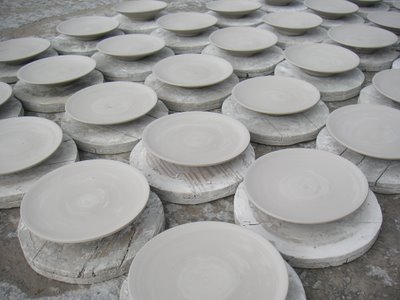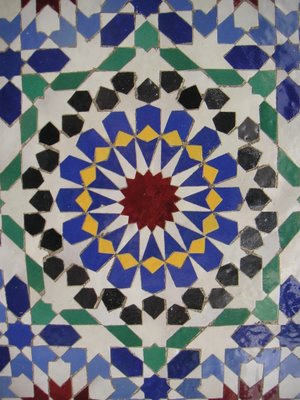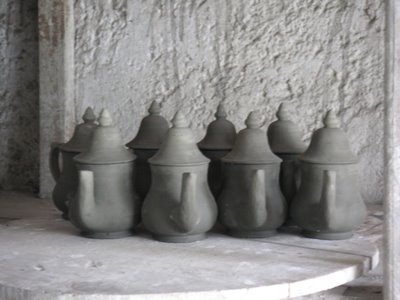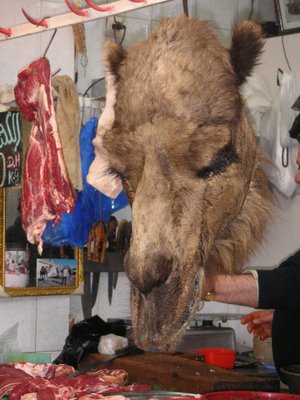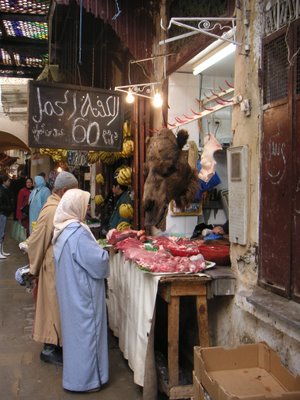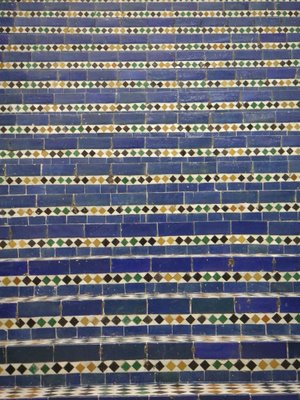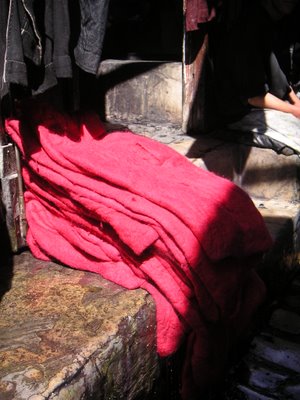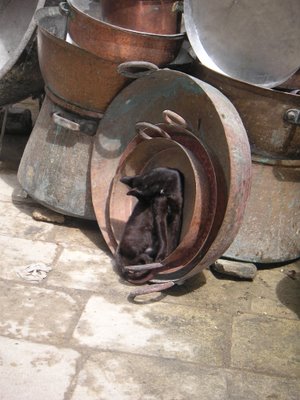Tuesday, April 11, 2006
Morocco
We spent two weeks in Morocco, flitting around many parts of the country. We saw deserts, snow-capped mountains, crazy cities, tiny villages, and everything in between. We ate couscous, fruit, couscous and couscous. We drank too much coffee. We rode camels. We shopped. We tried to speak French, Arabic, Berber and Japanese simultaneously. Hereunder you will find a small(ish) selection of the myriad excellent photos Fiona took. (We've posted them so that they appear in the order of our itinerary. A reminder: if you click on any of these pictures you should be able to view a much larger version.)
The journey began in Casablanca, city of romantic associations but few sights. Here we had our first taste of fresh mint tea, and saw figs and dates overflowing on the streets. The highlight was the beautiful new Hassan II mosque, which is simply gigantic and is (unusually) open to non-muslims for viewing.

The journey began in Casablanca, city of romantic associations but few sights. Here we had our first taste of fresh mint tea, and saw figs and dates overflowing on the streets. The highlight was the beautiful new Hassan II mosque, which is simply gigantic and is (unusually) open to non-muslims for viewing.

Monday, April 10, 2006
Rabat
Rabat is the Moroccan capital (trivia competitors, take note) and combines a modern/colonial city with a stark medina and a Portuguese-influenced blue-and-white kasbah.
Meknes
Meknes is an old imperial capital of Morocco and has some incredible sights, including a granary and stables which housed 20,000 horses. There is also the mausoleum of Sultan Moulay Ismail, covered in delicate mosaics. Meknes had a rough-around-the-edges feel, as the government still hasn't really developed it as a "tourist" spot. This was our first chance to get lost in messy, crazy souks within crumbling city walls.
Volubilis
Near Meknes lies the ruin of an old Roman city, Volubilis. This outlying imperial post was ransacked for its marble in recent centuries, but much of it was left untouched. It is now being restored and has been listed by UNESCO as World Heritage. The archaeologists say they've only uncovered about half of it. The city at its peak apparently housed about 20,000 people, and is still surrounded by vineyards and lush green olive groves.
Sunday, April 09, 2006
Fes
We visited the cultural heart of Morocco - and went shopping. Fes is an almost-intact medieval city, sprawling along a hillside in the centre of the country. We saw carpets being loomed, camel meat for sale at the butcher's, the old Jewish quarter, an apothecary, and the famous tanneries where men work in the sunshine dyeing fresh, reeking animal skins in pits of colour.
